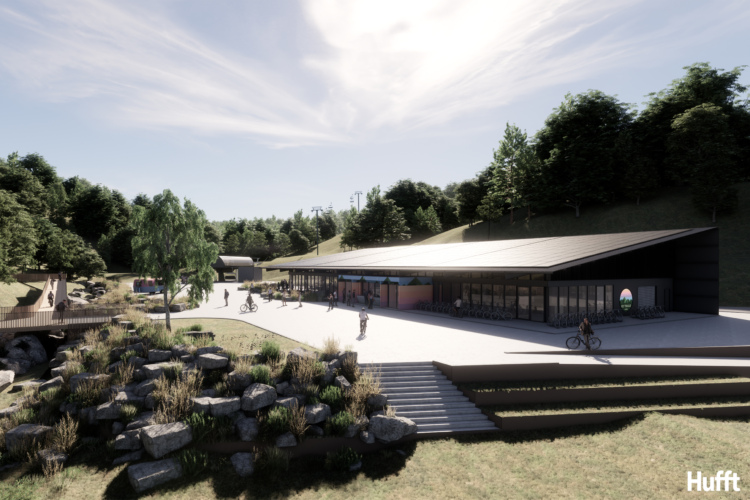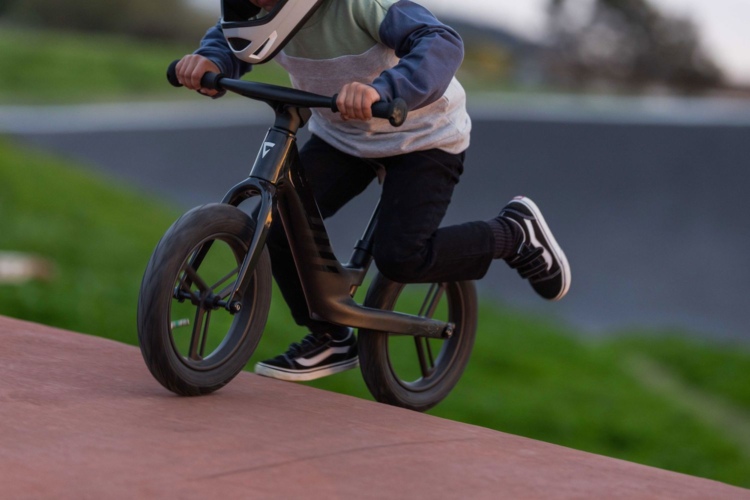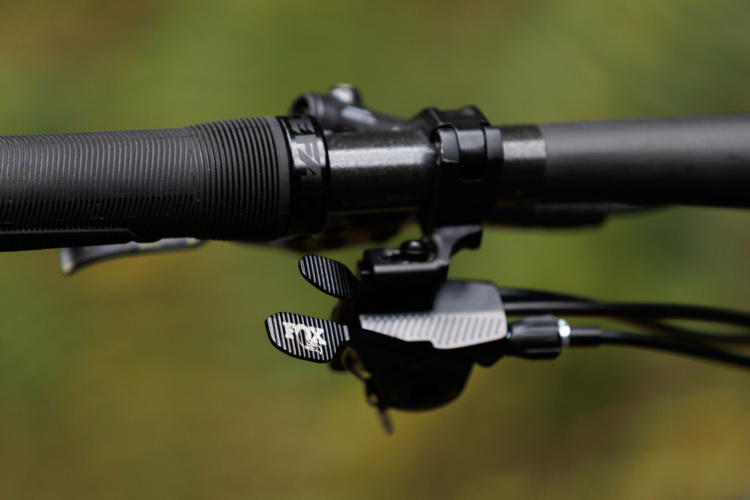Fat bikes might just be the biggest advancement in the mountain bike industry in the last decade. Perhaps that’s a bold thing to say, but I can’t think of a single change over the last 10 years that has had a bigger impact on the way we look at mountain biking. No longer does snow force us to spin on the trainer, strap on the skis or snowboard, or travel to warmer climates! Not that any of those things are bad, but in places that used to suffer from long, cold, frozen winters, mountain biking has, in just a few short years, transitioned from a seasonal pastime to a year-round lifestyle.
We’ve been covering fat bikes in great detail this winter, thanks in large part to contributions from new blog team member delphinide, as well as long-time team member maddslacker. Maddslacker wrote a fantastic three-part mountain bike buyer’s guide that covers budget models, mid-range models, and high-end fat bikes. However, with new fat bikes being released left and right, that list is, unfortunately, already dated.
Bike Nashbar’s Big Ol’ Fat Bike is one of the newest fat bikes on the scene, and it falls on the line between maddslacker’s “budget” and “mid-range” categories.

Specs
The Big Ol’ Fat Bike features a custom-butted chromoly steel frame, a frame material that boasts reliability proven over decades. Painted in a dark forest green with no decals or graphics of any kind, this bike looks like a tank that is ready to roll over anything in its path.


The drivetrain features a SRAM X5 3×9 setup with a SRAM Hussefelt Howitzer crankset. However, if you decide you don’t like a standard drivetrain on your fat bike, this rig features sliding dropouts to accommodate an internally-geared rear hub or a singlespeed setup.

The brakes are mechanical Hayes MX5 calipers coupled with Avid levers, with 160mm rotors front and back, and cockpit is a pretty standard-spec alloy getup, with a nice wide, flat bar.
This bad boy rolls on Vee Rubber Mission 26inx4in tires, mounted on no-name wheels with 70mm-wide rims. While these wheels are definitely a money-saving measure, the rims, unfortunately, don’t feature any weight-saving cutouts.

My size-medium rig, without pedals, weighs in at 37.37 pounds.
Out on the Trail… and the Snow
I’m sure I’m not the first writer to compare a fat bike to a tank, but then again I probably won’t be the last, either. But the Big Ol’ Fat Bike is a true tank. Yes, it’s heavy, but the indestructible steel frame, army-green paint job, no-frills black components, utter lack of decals, and the big friggin’ wheels look, yes, like the bicycle equivalent of a tank.
As for how it handles, it handles like you’d think a fat bike should handle: it rolls up and over anything, and pedals in snow. What more do you want from it?!
But of course, I can’t leave it at that. 🙂 When climbing, the tank properties are definitely in effect… sometimes it can feel like I’m pulling a boat anchor as I pedal uphill. While I can assuredly feel the weight of this bike, most of the time the rigid frame and fatty tires make me forget about it just as quickly. Yes, sometimes I wish this bike was lighter, but as you’ll see below, the price of this bike is radically less than you might expect.
The Big Ol’ Fat Bike is extremely stable when descending. At high speeds, the centrifugal force of the heavy spinning wheels and large tires keep this bike upright, and moving in a straight line. Granted, when riding on snow you don’t usually descend at very high speeds, but when descending fast on dirt, this rig takes some persuasion to turn. It either requires a ton of body english, some serious braking, or creative tactics to get this bad boy to turn at speed.

When riding on dirt roads, I’ve found the fastest, most efficient way to turn this bike at speed is actually to skid the rear tire, square off the corner, and keep rolling. Thanks to the 4-inch-wide treads, the front of the bike stays planted, while the rear can easily be swung around. Of course, try not to do this on singletrack, as skidding quickly degrades the trail.
When descending or cruising at slower speeds, with the centrifugal force at a much lower level, the bike leans and corners much more similarly to a standard mountain bike.
With any fat bike, picking the right tire pressure for the conditions is key. If you’re riding on snow or other soft surfaces, try super low pressures in the range of 3-6 PSI. If you’re riding on a mixed surface, try something a little stiffer, like 8. If you’re riding dry singletrack, I’ve personally found about 10-12 PSI to be ideal. When riding dry trails, if you choose the correct pressure, the voluminous tires are all the suspension you need for normal trail chatter and small to medium-sized obstacles.
To be honest, the weeks that I’ve had this bike have radically changed the way I look at winter biking. In Salida, we’re super blessed to be able to ride dry singletrack essentially 12 months per year, with just a few snow days here and there. Now, even though we have dry singletrack in town, the addition of a fat bike to my stable allows me to get up into the mountains to explore, even though there’s still a 100-inch snow base in most places.
Also, fat bikes allow you to explore places you can’t ride or that might not be as interesting in the summer. Around here, many of the gravel roads (or even paved roads that aren’t maintained during the winter) are groomed for snowmobiling, or are packed down by snowmobile traffic. While I might ride these roads during the summer, having a fat bike during the winter makes me look at these roads an entirely different way! They’re now rideable paths through an otherwise unrideable winter wonderland, giving me access to the high-alpine tundra even during the dead of winter.
Mission Vee Rubber Tires
All of the praise above notwithstanding, I am just not a fan of the stock Vee Rubber Mission tire. I did some research, and for this price point this is a very common tire… but I have no idea why. This tire countersteers (or autosteers, depending on how you look at it) horribly. This is especially noticeable on hardpack, and is an issue in snow as well.
My LBS actually has a fleet of Kona Wo rental bikes that have the same tires, and they suggested flipping the front tire the other direction. It’s a good call, and eliminates the countersteer effect. However, flipped backwards, there’s more rolling resistance (as this is a directional tire), and now when turning the tire bites extremely hard into the turns. While this still isn’t ideal, it’s more predictable and easier to manage than riding with a countersteer effect.
Finally, the low-profile knobs just don’t provide good traction in the snow. And despite the minimalistic knobs, this is still a pretty hefty tire.
As a result, I got in touch with one of my contacts and mounted up a set of Origin-8 Devist-8er Ultralight tires to try out on the bike. Stay tuned for the full tire review, but here are the spark notes:
- Lighter than the Missions
- More traction than the Missions, thanks to bigger knobs
- Much more predictable and all-around-better handling than the Missions
Even with the Devist-8er UL tires installed, at times I can still feel a bit of wheel flop. This is probably due in part to the heavy stock wheels, and a wheel upgrade could help remedy that as well.
While Nashbar spec’ing the Mission tires is an understandable choice, as there are only so many OEM tires available and every other bike at this price point is running the same tires, I would highly recommend that either Vee fixes the issue with their tire, or that all of these companies spec’ing this tire switch to something that handles better. And if you buy this bike, I would personally recommend a tire upgrade as soon as possible.
Price
 Normally we don’t spend much time discussing the price of the products that we review here on Singletracks, because only you can decide if a product is worth the price tag that’s attached to it. However, with the Big Ol’ Fat Bike, the price tag is a big part of the story.
Normally we don’t spend much time discussing the price of the products that we review here on Singletracks, because only you can decide if a product is worth the price tag that’s attached to it. However, with the Big Ol’ Fat Bike, the price tag is a big part of the story.
The Big Ol’ Fat Bike retails for $1,100 on Bike Nashbar’s website, but if you’re on the Bike Nashbar mailing list, you know they’re constantly offering sales and discounts. So, if you wait for the right moment to pounce, you can definitely snag this bike for $1,000 or less.
Now, if you take a look at maddslacker’s buyer’s guide, you’ll realize that there aren’t very many fat bikes in the sub-$1,000 category… and that this is the only one with a steel frame. For the price, this is a pretty tough bike to beat. Going up from here, prices soar quickly in the middle range.
Personally, I think this is a great bike for the price. I think the Big Ol’ Fat Bike is ideal for people looking to try out fat biking, or who just want to add a fat bike to an already large stable of bikes for a few days of snow riding here and there. However, our fat bike survey data suggest that fat biking is addictive, and that fat bikers tend to ride their fat bikes a ton, and usually end up buying a second fat bike.
However, with this rig, there’s no real reason to buy a new bike even if you decide to upgrade. While the stock bike might weigh in at 37 pounds, this solid steel frame, which could last a lifetime, is very upgradeable. As mentioned above, I think a tire and wheel upgrade would make a tremendous improvement for a moderate financial investment.
Bottom Line
This is a bomb-proof fat bike at an incredibly reasonable price. If you’re looking to try out fat biking but you’re not willing to commit multiple thousands to the endeavor, or if you just want to add a fat bike to your stable for a few snow rides here and there, the affordable-yet-awesome Bike Nashbar Big Ol’ Fat Bike is an excellent choice!
Thanks to Bike Nashbar for sending the Big Ol’ Fat Bike over for review.































7 Comments
Apr 11, 2014
Apr 11, 2014
Apr 12, 2014
Wheels upgrade is more then welcome if not riding rough staff. Gotta get a lighter pair for my "tank".
Dec 2, 2014
Nov 30, 2014
Dec 1, 2014
No, this bike isn't designed to accommodate 5" tires, so that's a big difference between this and the Night Train Bullet. Also, as you mentioned, the Bullet has an aluminum frame, suspension fork, hydraulic brakes, and a 2x10 (which I'd prefer personally over a 3x9). So there are the differences for ya :) These differences make the Night Train a very different bike from the Big Ol' Fat Bike, so you really need to decide for yourself what's most important: simplicity, bombproofness, and low cost of rigid steel, or higher performance of suspension, brakes, drivetrain, and bigger tires?
Nov 30, 2014